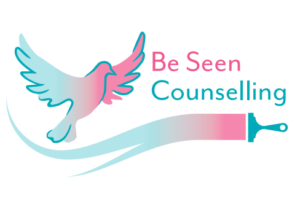If you’re reading this, it’s likely because you’re feeling the weight of a strained family relationship—specifically, a relationship with a sibling. And I want you to know, right from the start, that I completely understand how challenging this can feel. Growing up, we’re often led to believe that sibling relationships are meant to be full of laughter and support, but in reality, they can be quite complicated. And sometimes, things just don’t turn out that way.
Now, we’re in February—a time of year that tends to focus on romantic love, with Valentine’s Day just gone by, and we’re surrounded by images of hearts, flowers, and couples. But love comes in many forms, and often, the type of love that goes unnoticed or is undervalued is the love between siblings. Whether it’s the bond between brothers, sisters, or step-siblings, these relationships have the potential to be deep and fulfilling, but they can also be fraught with conflict, misunderstanding, and emotional distance.

Sibling relationships can become strained for many reasons. Perhaps you’ve experienced a breakdown in communication, frequent arguments, or long periods of silence. Maybe unresolved childhood issues are casting long shadows into adulthood. Or perhaps the dynamic has shifted as you’ve all grown older, and the things that once connected you now seem distant or irrelevant.
Here are some of the most common sibling dynamics that can become difficult to navigate:
Sibling rivalry is one of the most common issues that surfaces in therapy, especially when there’s a history of competition for attention, resources, or affection. Often, rivalry is intensified by the roles each sibling assumes in the family dynamic, and these roles can persist into adulthood. For example, one sibling may have been the “responsible” one, while the other was perceived as the “rebellious” one, or one may have been labelled the “golden child,” while another took on the role of the “scapegoat.” These roles—whether assigned by parents or developed organically—can define how siblings relate to one another, sometimes with lingering resentment.
Parental Influence is a key factor in sibling relationships. Whether parents realise it or not, they can directly or indirectly influence how siblings get along. For example, when parents play favourites—whether intentionally or not—it can breed feelings of inadequacy or jealousy in the less favoured sibling. If parents consistently compare their children or pit them against each other, it can set up a lifetime of competition and unresolved tension. Alternatively, parents who fail to nurture healthy communication between their children may find that their kids drift apart as adults.

One insightful resource I highly recommend is the book Sibling Issues in Therapy, which delves into the complexities of sibling relationships and how they manifest in therapy. One of the key learnings from the book is that sibling issues often centre around unresolved childhood dynamics. These dynamics can shape how siblings perceive themselves and each other well into adulthood. Therapy often reveals that many sibling conflicts stem from feelings of abandonment, jealousy, or unmet needs that were never adequately addressed.
The book also explores sibling role positions—the idea that your birth order and family role can significantly affect how you interact with your siblings. For example:
Understanding these roles can help siblings untangle long standing feelings of resentment or misunderstanding.
If you’re the eldest sibling, you may have heard of “older child syndrome” or perhaps have felt its effects without even realising it. As the firstborn, there are certain expectations and pressures that often shape your personality and behaviour, sometimes in ways that continue well into adulthood. But what exactly is older child syndrome, and how can it be addressed if it’s holding you back in your adult relationships or life in general?
Let’s dive into what this syndrome entails and how, with some awareness and effort, it can be reshaped in adulthood.
“Older child syndrome” refers to the common traits, patterns, and behaviours often seen in firstborn children due to their unique role within the family. Eldest siblings frequently assume more responsibility, are held to higher expectations, and are often viewed as role models for their younger siblings. These early experiences can lead to certain characteristics, some of which are positive, while others can be more challenging.
Here are some of the common traits associated with older child syndrome:
Responsibility: Firstborns often find themselves acting as a “mini-parent” to their younger siblings, which can make them feel a strong sense of responsibility—not just for themselves, but for others around them.
Perfectionism: Many older children grow up with a desire to meet their parents’ high expectations. This can create a drive for perfection and a fear of making mistakes.
Leadership Tendencies: Being the eldest often means stepping into leadership roles from a young age—whether that’s being the decision-maker in sibling disputes or setting a good example. This can foster strong leadership qualities, but it can also lead to feeling burdened or overbearing at times.
Control Issues: Because older children are used to being in charge or having to manage things, they may develop control issues. They might find it difficult to relinquish control in group situations, relationships, or even at work, where they feel everything must be done “their way.”
Pressure to Succeed: Eldest children are often the first to go through various life milestones, from school to university and beyond. As such, there can be enormous pressure to succeed, which can lead to anxiety or self-criticism when things don’t go perfectly.
While these traits can serve older children well in many aspects of life, they can also cause stress and tension, particularly in adulthood when those early roles may no longer fit or feel healthy.
The good news is that it’s entirely possible to work through the challenging aspects of older child syndrome in adulthood. By becoming aware of how your role as the eldest sibling has shaped you, you can begin to make intentional changes in how you approach relationships, responsibilities, and self-expectations.
Here are a few ways to start addressing and transforming the effects of older child syndrome:
1. Release the Pressure to Be Perfect
One of the key traits of older child syndrome is perfectionism, which can lead to feelings of inadequacy when you don’t meet impossibly high standards. In adulthood, it’s important to recognise that perfection is not only unattainable but also unnecessary. Mistakes are a natural part of life, and they don’t diminish your worth. Learning to embrace imperfection, both in yourself and others, can lead to a much more relaxed and fulfilling life.
Try to remind yourself that it’s okay not to have everything under control all the time and that asking for help doesn’t make you weak—it’s a sign of strength.
2. Practice Letting Go of Control
Many older children struggle with control, often feeling that they need to manage everything to ensure things go smoothly. In adulthood, however, constantly being in control can lead to exhaustion and strained relationships, especially if others feel you’re being overbearing.
One helpful exercise is to actively practise letting go in small, manageable ways. Allow others to take the lead in situations, delegate tasks without micromanaging, and remind yourself that things don’t have to be perfect to work out. Over time, you’ll feel more comfortable trusting others and releasing the need for control.
3. Set Boundaries with Responsibilities
Older children often feel a sense of responsibility for everyone around them, which can lead to burnout. In adulthood, this might show up as taking on too much at work or in personal relationships, feeling like you always need to be the one who “fixes” things for others.
Learning to set healthy boundaries is essential. It’s okay to say “no” when something isn’t your responsibility or when you’re feeling overwhelmed. You can still be a caring, supportive person without shouldering the burden of everyone else’s problems.
4. Shift from Competition to Collaboration
In sibling dynamics, older children might feel competitive, striving to be the best or constantly comparing themselves to younger siblings. In adulthood, this competitive mindset can carry over into other relationships or professional settings.
Instead of viewing others as competitors, focus on collaboration and teamwork. Remember that success doesn’t have to be a solo journey—you can achieve great things alongside others, and mutual support can bring more joy and fulfilment than competition.
5. Redefine Your Role in Relationships
One of the biggest challenges for eldest children is recognising that their role within the family (and in life) can change. You no longer have to be the “responsible one” all the time. In adulthood, relationships should be based on equality, not old roles that no longer serve you or your siblings.
By acknowledging this, you can approach your relationships—both with family and others—with fresh eyes, allowing yourself to be seen as an individual, not just as “the eldest.”
Breaking free from the patterns of older child syndrome requires time, self-awareness, and a willingness to change. But the reward is worth it—a more balanced, fulfilling life, where the positive traits of being the eldest (such as leadership and responsibility) are embraced, while the more challenging aspects (such as control and perfectionism) are softened.
If you recognise yourself in some of these traits, take a moment to reflect on how being the eldest has shaped your experiences and relationships. Then, consider how you can begin to let go of the unnecessary pressure, perfectionism, and control, replacing them with healthier, more flexible ways of being. You deserve to live a life where you feel at ease with yourself and your relationships, unburdened by the old expectations that no longer serve you.
With time and effort, you can redefine what it means to be the eldest sibling in a way that works for you as an adult.
If you’ve found yourself in a situation where there’s been a falling out or ongoing tension with your sibling, I want to assure you that reconciliation is possible. Here are a few ways you might begin to reconnect and rebuild the relationship:
Practice Patience: Rebuilding a relationship doesn’t happen overnight. Be patient with yourself and your sibling as you try to mend the bond. It may take time for both of you to trust each other again or to settle into a healthier dynamic.

As adults, siblings have the unique opportunity to redefine their relationship. Here are a few tips for fostering harmony:
Sibling relationships can be some of the most complicated but also the most rewarding bonds in our lives. Whether you’ve experienced sibling rivalry, emotional distance, or unresolved conflicts, there is hope for healing. It takes effort, understanding, and sometimes the help of therapy, but rebuilding a strong and supportive sibling relationship is possible—and worth the journey.
If you’re ready to take that first step towards reconnection, know that it’s never too late to heal old wounds and create a new, more fulfilling relationship with your sibling.

Hi there, my name is Carina,
I support survivors of domestic violence / Intimate partner violence, to understand and process the emotional and psychological symptoms so that you live your life feeling safe in your own skin, gain peace and joy in everyday moments and trust yourself and others again.
Camberwell
Southwark
London SE5 7HN

©BeSeenCounselling2025
©2025
Be Seen Counselling